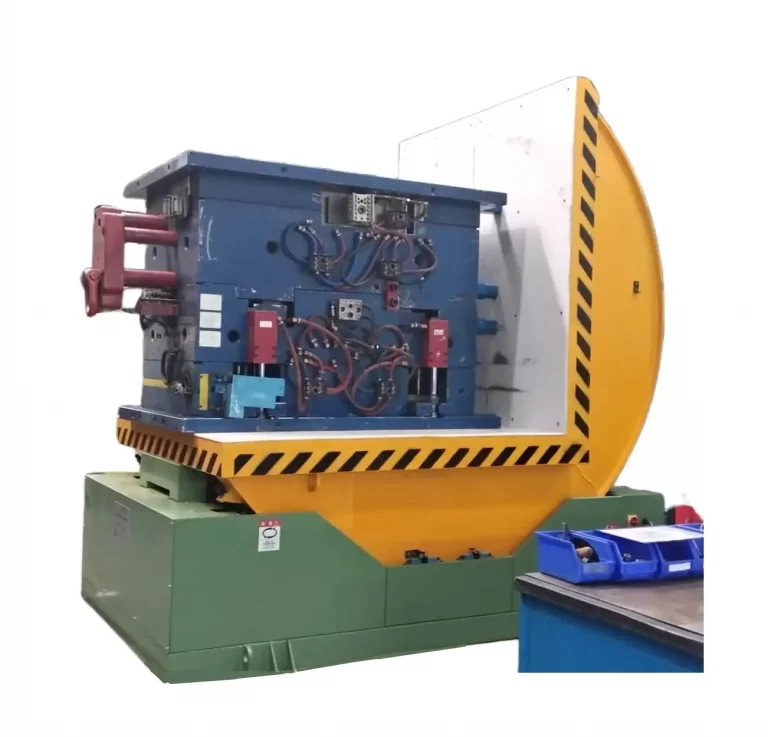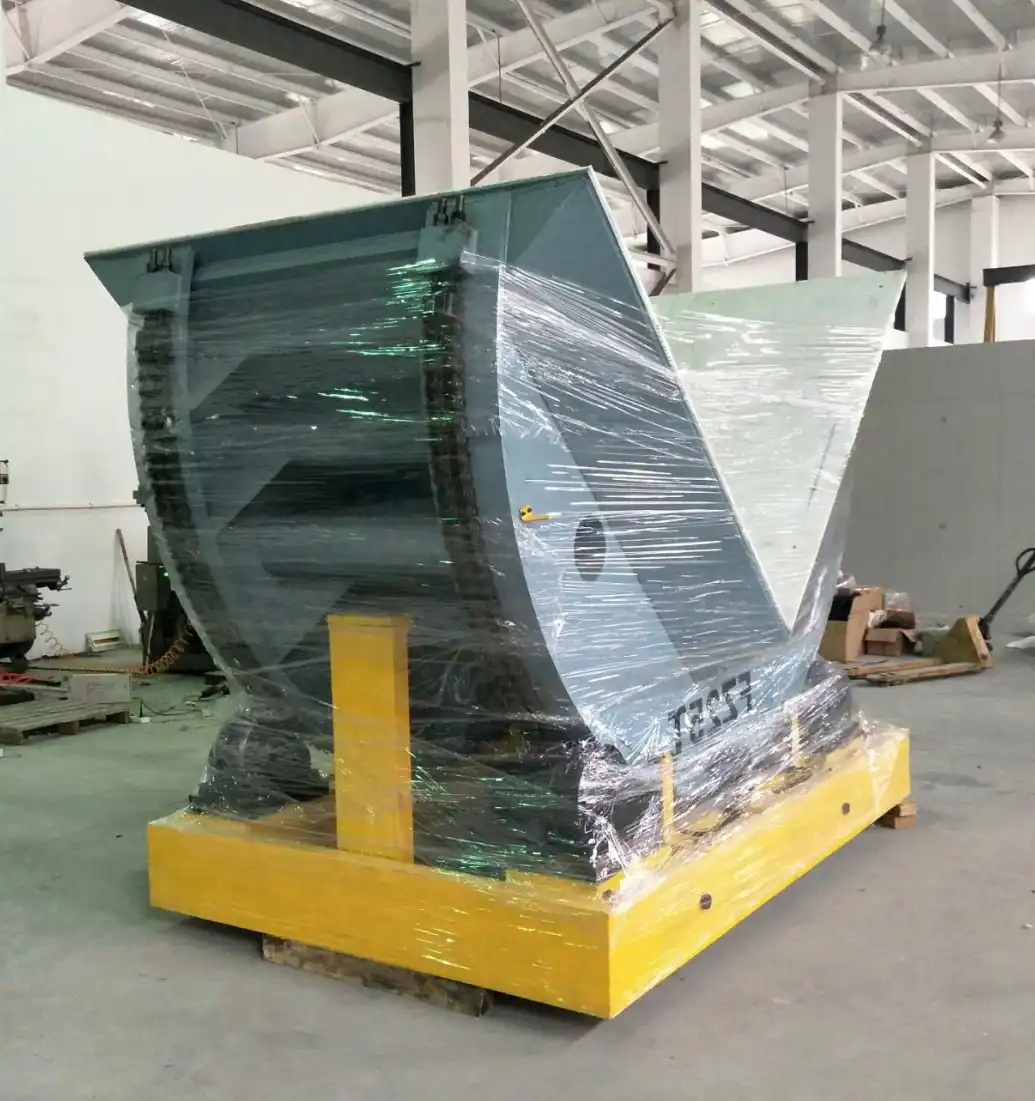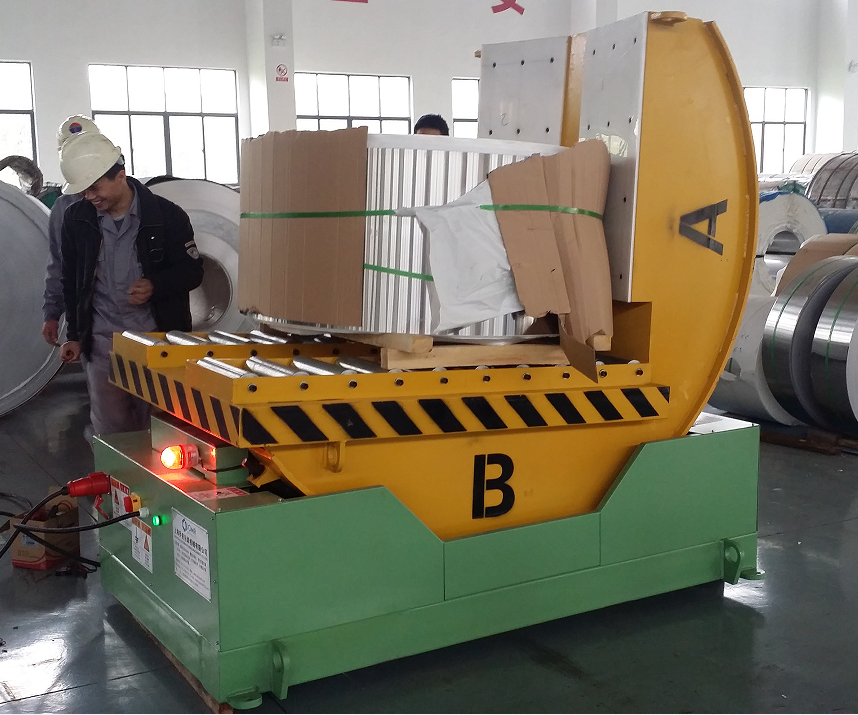Ensuring safety in any industrial setting is paramount, and when it comes to steel coil handling, the stakes are high. Accidents can be costly and dangerous. The search for a safe steel coil upender is driven by the need to protect both operators and workers, reduce workplace incidents, and maintain productivity.
A safe steel coil upender should incorporate features such as user-friendly controls, emergency stop mechanisms, and automated positioning systems. Safety barriers and sensors further safeguard operators working in proximity. Reliable braking systems prevent accidental slips, while robust construction ensures stability and durability under heavy loads. Proper training and regular maintenance are key to maximizing safety.

The journey to integrating a safer steel coil upender involves evaluating multiple factors. From selecting the correct model that suits operational needs to understanding the specific safety mechanisms, it’s a comprehensive process. As someone with a long-standing career in the industry, I’ve witnessed significant advancements. Now, let’s delve into the specifics of what ensures the utmost safety in these machines.
1. What Essential Safety Features Should a Steel Coil Upender Have?
Handling heavy steel coils requires precision and care. The right upender can make all the difference between a smooth operation and a hazardous workplace. It’s a fine balance between technological innovation and practical application to ensure safety.
Essential safety features of a steel coil upender include automatic locking systems that secure the coil during handling and transportation. Anti-slip surfaces minimize the risk of falls, while intuitive control panels offer ease of operation. Robust frame construction provides substantial support, reducing the chances of equipment failure under load. Consideration of ergonomics can also enhance operator comfort and reduce strain.

Delving into Safety System Improvements
Focusing on the small details of upender safety features can yield significant benefits. Let’s analyze key elements contributing to improved safety in these machines. First, the importance of automated systems cannot be overstated. These systems include load sensors that balance the coil during rotation, enhancing stability and reducing manual intervention. Normal braking systems represent a second pillar of safety, necessary for sudden stops. A history in mechanical engineering has taught me the value of reliability in braking systems to prevent unexpected slips.
A factor often ignored is communication. This involves integrating upenders with facility systems for real-time updates. Safety indicators and alerts, such as visual and audible signals, keep all workers informed of machine operations and potential hazards. This proactive communication avoids accidents before they happen. Having spent years optimizing these technologies, I can state their real-world effectiveness confidently.
Lastly, ergonomic designs reduce strain on operators. Simple elements like more accessible controls and comfortable handling positions prevent fatigue, improving overall operator well-being. Worker engagement, paired with ongoing training, minimizes human errors further. The combination of automation, communication, and ergonomic design in steel coil upenders showcases my commitment to prioritizing safety, aligning with Fhopepack’s mission of innovative solutions.
| Feature | Description | Benefits |
|---|---|---|
| Automated Locking | Secures coils during movement | Enhances safety |
| Anti-slip Surfaces | Provides stability for operators | Prevents slips and falls |
| Robust Construction | Ensures durability under loads | Reduces equipment failure |
| Ergonomic Design | Enhances operator comfort | Decreases fatigue |
By dissecting these components, we understand the technological underpinnings and the impact on workplace safety, guiding informed decisions in purchasing and operation.
2. How Does Operator Training Enhance Safety with Steel Coil Upenders?
To bolster productivity while ensuring safety, operator training plays a critical role in handling steel coil upenders—machines indispensable in heavy industry sectors. Awareness and adaptability are key, but without structured training, operational risks loom. What exactly does training offer? By imparting hands-on skills and essential safety protocols, operator training transforms potential workplace hazards into controlled environments. It cultivates informed operators who can adeptly manage complex machinery and respond swiftly to emergencies. Moreover, it reduces downtime caused by mishaps, ensuring seamless operations and maintaining consistent output quality.
Operator Training Dynamics
Let’s dissect how training enhances both productivity and safety. A company is only as strong as its workforce; inadequate training can inhibit growth and invite disasters. Training programs address fundamental facets of machine handling that elevate operational standards:
| Aspect | Focus | Outcome |
|---|---|---|
| Safety Protocols | Emergency procedures, risk awareness | Reduced workplace incidents |
| Machinery Familiarity | Functionality, troubleshooting basics | Enhanced operational efficiency |
| Process Optimization | Streamlined workflows, reduced downtime | Increased productivity and cost-effectiveness |
In my decades within this field, I’ve understood the essence of human interaction with machinery. When training transfers knowledge from static manuals to dynamic scenarios, the workforce becomes adept at predicting machine behavior and anticipating potential failures. Each session must focus on actionable insights and real-world applications. This is not just about avoiding accidents but nurturing a team’s confidence in machine manipulation. Effective training instills a sense of ownership among operators, which is crucial for maintaining a safe workplace and maximizing operational longevity.
3. Why is Regular Maintenance Critical for Safe Operations of Steel Coil Upenders?
Neglecting maintenance of steel coil upenders is akin to courting operational disasters—it jeopardizes safety and hinders efficiency. Regular checks and balances prevent these mishaps by keeping the machinery in optimal working condition. Routine maintenance ensures that mechanical components operate smoothly, reducing wear and tear. This preemptive care safeguards workers and extends equipment life, minimizing unexpected breakdowns and costly repairs. By consistently upholding machine standards, it allows uninterrupted production and heightened safety compliance.
The Maintenance Anatomy
Let’s delve into how regular upkeep supports operational integrity. Maintaining heavy equipment isn’t merely a compliance exercise; it’s proactive risk management. Consider these pivotal areas:
| Checkpoint | Task | Benefit |
|---|---|---|
| Mechanical Inspection | Lube applications, alignment checks | Reduces friction, prevents component wear |
| Electrical System Checks | Circuit tests, cable evaluations | Ensures energy efficiency, avoids failures |
| Safety System Overhaul | Sensor validations, emergency stops | Guarantees reliable safety feature response |
In my career, I’ve witnessed how structured maintenance schedules can be a game-changer. It goes beyond fixing what’s broken; it identifies vulnerabilities before they evolve into critical issues. Implementing predictive maintenance creates a culture of accountability and diligence. Aligning technical teams on periodic checks inspires confidence and promotes an understanding of how maintenance integrates with operational goals. In this alignment lies the true advantage—secure surroundings and uninterrupted operations resulting from disciplined attention to detail.
Conclusion
Ensuring safety in steel coil upender operations involves integrating safety features, operator training, and regular maintenance to protect workers effectively. This fusion of practices fosters an atmosphere of vigilance and preparedness, reducing risks while optimizing productivity. In the end, it is about empowering teams and prioritizing machinery care for sustained industrial advancement.
Ensuring safety in steel coil upender operations involves integrating safety features, operator training, and regular maintenance to protect workers effectively.

